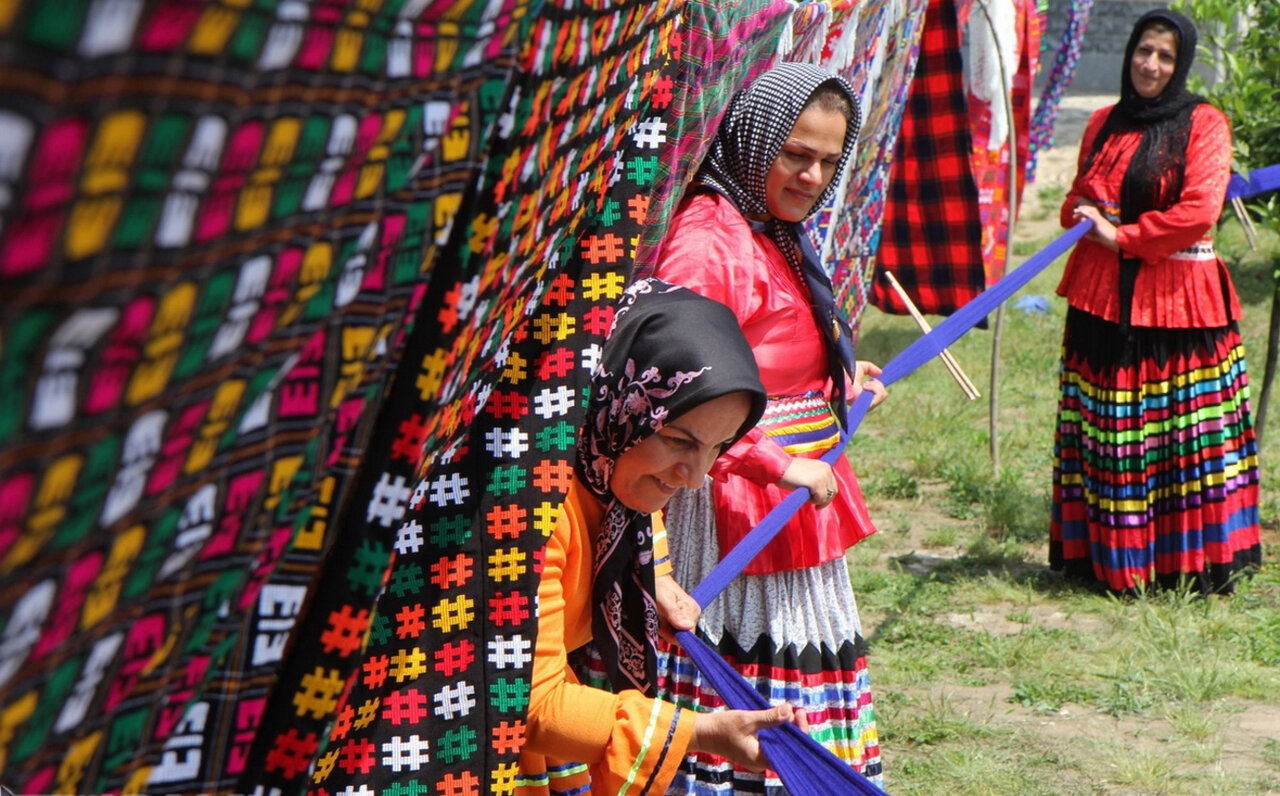From tradition to global recognition: discover Qasemabad textiles

TEHRAN - Qasemabad, an old village in northern Iran, is a vibrant gem recognized globally as the World Village of Chador-Shab Weaving by the World Handicrafts Council.
For many Iranians, the village is synonymous with color and happiness, thanks to its rich tradition of creating various kinds of colorful fabrics and traditional clothing.
Situated in Rudsar county of Gilan province, the village’s most renowned fabric, which is named Chador-Shab, is believed to have a history of about 2,000 years. It is a vibrant, intricately woven fabric made from cotton, silk, or wool.
The art of weaving these beautiful textiles is predominantly undertaken by women who use traditional handmade machines called Pachal. These skilled artisans create Chador-Shabs not just as a craft, but as a reflection of their culture, customs, and daily lives.

According to Visit Iran, some 600 women are engaged in the craft across the village, fostering a community dedicated to preserving and innovating that ancient craft.
The high quality of the products, coupled with the establishment of numerous local centers focused on this handmade art, led to Qasemabad being nationally recognized as the village of Chador-Shab weaving in 2018. This recognition was further elevated to a global level in 2020 when Qasemabad was inscribed by the World Crafts Council on its list of world cities and villages for its unique contribution to this traditional art.
Chador-Shabs are celebrated for their attractive, imaginative patterns, often inspired by nature. Designs such as Shaneh-Gol, Qali-Gol, Sarv-Gol, Chehel-Cheragh, Parand, and Booteh-Charkh evoke the natural beauty of the region. Historically, women wore these vibrant fabrics around their waists while working in rice fields. Today, Chador-Shabs have found new purposes, including tablecloths, curtains, bed linens, and elements of modern fashion.

To promote and preserve this invaluable heritage, Qasemabad is home to several institutions like the Forum of Innovative Textile, Chador-Shab weaving workshops, handicraft shops, and a dedicated Chador-Shab Weaving Museum. These centers not only support the craftswomen but also educate visitors about the intricate art of Chador-Shab weaving.
Visiting Qasemabad offers a unique opportunity to witness the colorful and lively tradition of Chador-Shab weaving firsthand. It is a journey into a world where every thread tells a story, every pattern holds a piece of history, and every Chador-Shab is a testament to the enduring creativity and cultural heritage of this remarkable village.
AM
